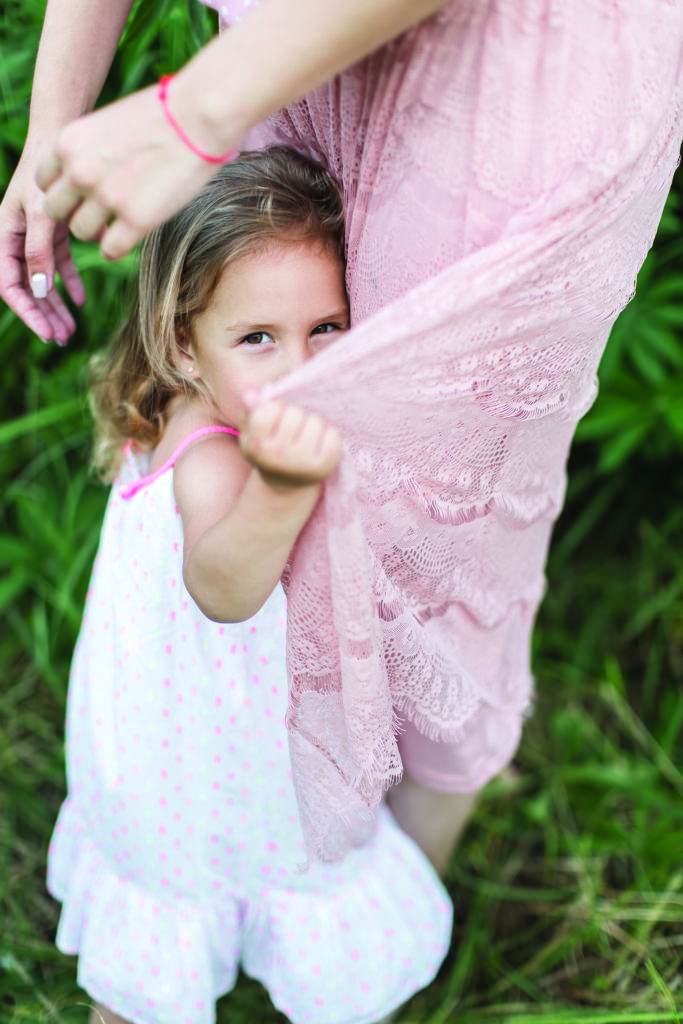Why They Are So Comforting
BY ZOË KORS
As the daughter of a Jewish mother and a Norwegian father, I learned as a kid that there were two distinct kinds of hugs. There was the bone-crushing embrace of my Bubbe, which was accompanied by a series of kisses literally smacked onto my cheek, forehead, and (if aimed poorly) eyelid. With her lips pursed over clenched teeth she would lunge, dying to sneak a bite of me as if I were an irresistible piece of chocolate babka.
Visits to the other side of the family concluded differently. Grandma Dagny would stiffen her body like a wooden board and awkwardly proffer her cheek to fend off any potential kisses that could make lip contact. She was not a cold woman, but her warmth and affection were expressed through coffee and conversation, not physical contact. Uff da. Very Scandinavian.
A defining childhood experience involved a hug from my dad. When I was six, we had a green-and-yellow parakeet named Barney who walked around the kitchen floor like a dog, catching crumbs and occasionally hitching a ride on a passing foot. One day while rushing to ballet class I stepped on Barney. I was wearing big fat waffle-patterned rubber-soled sandals and l felt him crunch under my foot. What I saw and heard is permanently seared into my memory. Barney was immobilized on the floor with his back broken, squawking in pain but not dead. Recognizing there was no way to save him, my father knelt down and took me in his arms. Safe in the sheltered world of my father’s embrace I buried my face in his shoulder and sobbed just a few feet from our suffering Barney, waiting for him to finally die.
I didn’t go to ballet that day. Dad made sure I knew it wasn’t my fault and took me for an ice cream to soothe my aching heart, but not before disposing of the shoes with the blood and feathers adhered to the waffle soles.
Many years later when my daughter was born, I became reacquainted with the importance of hugging. Any woman who has had a baby is familiar with the bizarrely wondrous feeling of having a human being growing inside her body. And when it’s time to give birth the transition from inside to outside mixes feelings of relief and loss. I am curious what the experience is like for the baby.

In the earliest days after birth, we replace the warm, tight containment of the womb with the swaddling of a blanket. In fact, the basic ways we soothe our babies are rooted in mimicking the conditions in utero. We cradle them in our arms, holding them tightly to our chest where they can hear our hearts beating and feel surrounded . . . contained . . . held. In the world outside the womb, our first language is hugging.
I love hugs. I give good hug. In fact, I consider hugging a practice, a healing modality, a form of meditation. I rarely am at a loss for a lover, but what I truly crave more often than sex is a long, quality hug—the kind you sink into so long you forget that you are actually two people.
Recently I asked my 1,500 Facebook friends what they love about hugs. The responses were plentiful and all about safety, warmth, comfort, security, heartbeats, connection to each other, and connection through each other to Source or Oneness. To me that sounds a lot like the bonding that happens at the dawn of our consciousness. Our love of a proper hug is not superficial or silly. It speaks to our need for the kind of existential homeostasis programmed in early infancy, or reaching even further back in the tight embrace of our mother’s womb, when the two bodies actually were one.
As my colleague Bryan Reeves so eloquently states in his article The Eightfold Path to a Truly Great Hug, “A truly great hug is a rich experience that has you pull another human body deliciously tight into yours as a way of saying, ‘I so deeply value your presence that I’m taking this exact moment to feel you, smell you, breathe with you—essentially stamp your being into my cellular memory so that even though we may soon part, you will in fact always be with me in the living fabric of my existence.’”
Consider this article an invitation to join me in bringing deep healing to someone by giving them a truly great hug. Reset their nervous system. Allow them to dissolve into pure existence where there is no thought. Let them surrender and fall into your loving embrace and into the pathway of connection. Let’s make this our practice. You know—saving the world, one hug at a time.
Zoë Kors is a sought-after thought leader in intimacy and women’s sexuality. She is committed to transforming the way we hold our sexuality—both individually and culturally—and to creating a compassionate, loving world through the cultivation of a sisterhood of wildly expressed women. ZoeKors.com